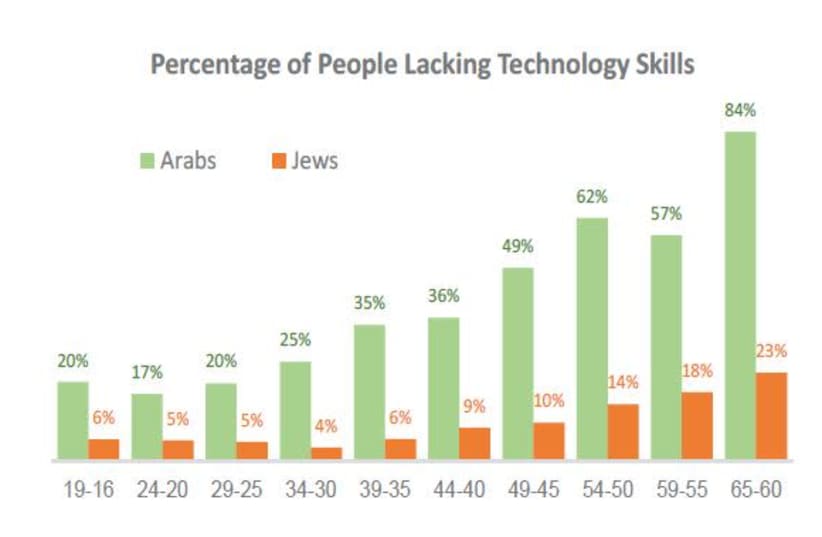The Program for the International Assessment of Adult Competencies (PIAAC) is a survey of adult skills carried out by member countries of the OECD. The survey directly measures reading literacy, mathematical level and ability to solve problems online, skills that have been identified by the OECD as important for a wide range of professions and which address the challenges of modern life.
The survey consists of three tests: reading, math and problem-solving. The survey was carried out in a representative sample of adults living in Israel. Results enable countries to identify different levels of professionalism and capability in these three areas in their countries and in specific communities within each country.
The data we have are based on a survey conducted by Israel’s Central Bureau of Statistics (CBS) for the OECD in 2014 and 2015, which showed a large range of results between various communities. In fact, Israel comes in first or second in the three areas in the size of ranges in the scores.
The distribution is calculated as the difference between the scores received by test participants in the 95th percentile (i.e., those who scored higher than 95% of all the other participants) and the scores received by those in the fifth percentile (i.e., only higher than 5% of the other participants).
The survey examined respondents’ ability to solve problems in an online environment, and required basic familiarity with computers. People who were not able to answer the survey questions are considered to lack basic computer skills. The survey enables comparing the number of Israelis with no skills in each age group against other age groups, comparing the Arab population with the Jewish population in Israel, and comparing against the OECD average. The different population and age groups have different characteristics.A difference in rates can indicate that these characteristics affect the achievement of the various groups participating in the survey.
From the survey’s results, it can be deduced that the older the participant, the more likely he or she is likely to lack computer skills. The CBS explains this phenomenon by noting that the widespread use of computers is a relatively new phenomenon. In addition, there is a large gap between the Arab and Jewish populations, but the younger the respondent, the smaller the gap. These numbers do not give us a full picture of all factors, but they do indicate that specific challenges might be overcome if appropriate measures are implemented among specific populations.
Translated by Hannah Hochner.
